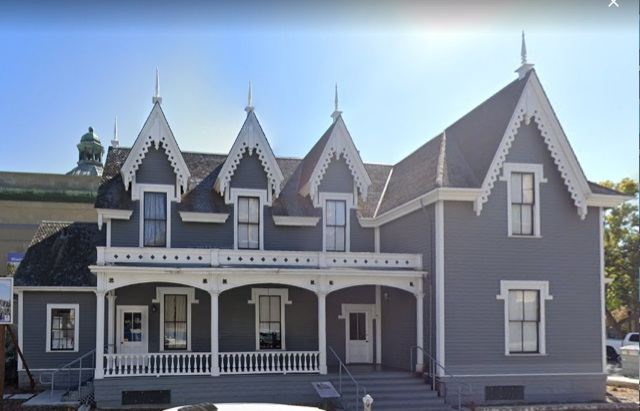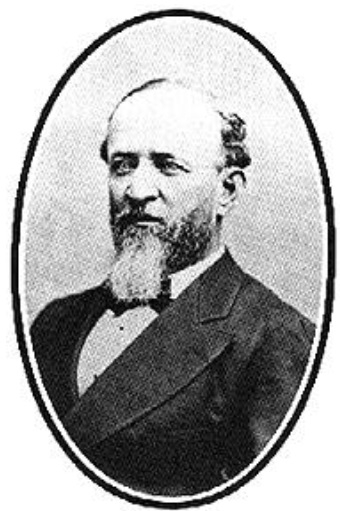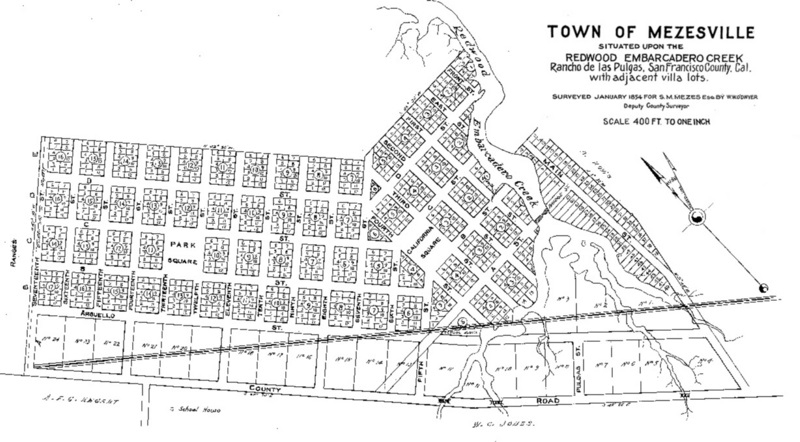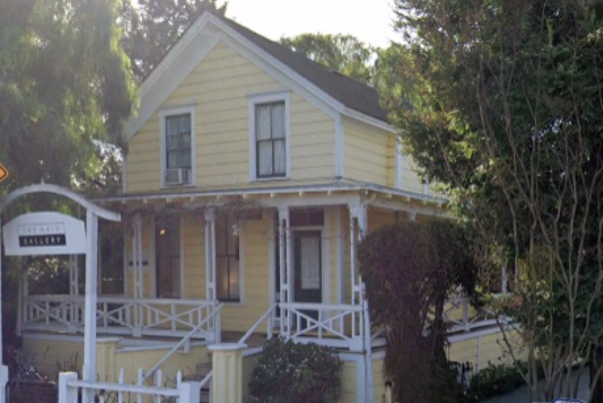Redwood City may have been forever known as "Mezesville" if not for a group of defiant land squatters who refused to recognize the name of the early development mapped out in the mid-1800s.
It was here where land owner Simon Monserrate Mezes tried to establish a town with his name after acquiring the property from the powerful Arguello family as payment for helping them prove their legal ownership of Rancho de las Pulgas, a 35,240-acre Mexican land grant that confirmed the land used by the Arguellos under Spanish rule and encompassed present-day San Mateo, Belmont, San Carlos, Atherton, Menlo Park, Redwood City and eastern Woodside.
Mezes, a well-connected attorney who was fluent in Spanish and English, represented the Arguellos and their enormous rancho during a time when U.S. law began to supersede Mexican law as the new government took over. It was Mezes' job to protect the Arguello's property not only from squatters but also to defend their legal claim of the Spanish land grant before the United States Land Commission.
It took several years, but Mezes finally prevailed on behalf of the Arguello family, and their Pulgas Rancho claim was patented in 1856. For payment for his services, the Arguellos gave Mezes somewhere around 5,000 acres, including present-day Redwood City, an area on the bay’s edge with a port for shipping redwood lumber to San Francisco.
Mezes evicted all the squatters in the area and mapped out "Mezesville." He reportedly planned to divide the land given to him into parcels and sell them to the squatters for $75 each. This did not go over well with the squatters, who disliked Mezes so much, they refused to accept the town’s name. In 1867, the town took the name Redwood City and became the seat of the newly formed San Mateo County.
Despite not having a town named after him, Mezes went on to become one of the major players in land deals on the Peninsula. By selling to subdividers, settlers and land speculators, Mezes became very wealthy.
And we can't forget that it was his vision for "Mezesville" that laid the groundwork for Redwood City, which today celebrates a long and storied history as the oldest city on the San Francisco Peninsula. Some of the Peninsula's oldest homes and earliest architecture can be found in neighborhoods throughout the city. Here are some highlights:
Lathrop House among oldest on Peninsula
Benjamin G. Lathrop, the first county clerk, recorder and assessor, was among the earliest to purchase a town plot in 1858 on what is now Broadway. He built an elaborate 11-room gothic revival mansion in the steamboat style, a design meant to resemble the steamboats found on the Mississippi and Ohio Valley rivers in the South.
The home, which was completed in 1863, has two narrow tall gables in front and several others around the perimeter roof, all with lance-type finials, originally serving as lightning rods. Over the decades, the Lathrop House has passed through many hands and locations. It now serves as a museum at its current location behind the County Courthouse at 701 Hamilton St. It is on the National Register of Historic Places and is one of the Peninsula's oldest mansions.
Mezesville, the historic district
Although there is no city of Mezesville, there is a district in Redwood City with Mezes' namesake: The Mezesville Historic District, located in the Centennial neighborhood west of Brewster Street, boasts streets named for Mayflower pilgrims and several pre-1906 Queen Anne cottages. The houses here were constructed by carpenters and feature asymmetrical front facades topped by gable and steep roofs. Some of the Queen Annes in this district were built in the Eastlake style with extra flourishes of intricate lathe and saw-shaped wood details.
The home of Joshua L. Snow, a brick mason, is among the early homes here. He purchased a lot on the corner of Howland and Arguello streets in January 1866 and built his house a year later. The tall, two-story home, which has since been modified with two entrances, was designed in the Greek Revival style. It features a temple-like towering gable with a pediment on top. The home is known as the "Jewel House," for its second owner, local farmer Henry Jewel, who bought it in 1883.
There also are small cottages in this neighborhood that feature single-story front gables with various embellishments. The cottage at 235 Samson St. is an excellent example of the Queen Anne style. Built in 1902, the home has a semi-hexagon bay window with a tall fish-scale shingled gable and a deep-set porch. The same pattern is repeated at the 1902-era cottage at 828 Hopkins St.
The homes of Stambaugh-Heller
The Stambaugh-Heller neighborhood, with its tree-named streets, is located south of downtown adjacent to Middlefield Road, which was the main thoroughfare in the 1850s. As a result, you'll find some homes in the vicinity built in the mid-1800s. One example is the home at 1018 Main St. near the Middlefield Road intersection that owner George Heller, for whom the neighborhood is named, built in 1857. Heller operated a livery stable and worked as a stagecoach driver. The home was later occupied by John Offerman, a German who operated two stores and a brewery, and also served as the county treasurer.
The most ornate house in the neighborhood can be found at 446 Heller St. Built in 1885 by Christian Jansen Hynding, the proprietor of the old Redwood City Hotel, the home is one of the more elaborate Queen Anne cottages and has a Victorian-style, two-story tower and other richly decorative trim at the bay window, front entrance and second-story deck.
The neighborhood also was home to two brothers originally from Ohio: Solomon Shultz Stambaugh, who was a physician, and Wilson Franklin Stambaugh, who worked as a saloonkeeper and later as a retail grocer. The neighborhood also takes its name from them. Dr. Solomon Stambaugh built the home at 427 Stambaugh St. in 1875, according to County of San Mateo historic data.
Stambaugh Street itself has several addresses listed as built pre-1906 (and note that county data regarding construction dates doesn’t always agree with real estate listings). The Queen Anne theme of one- and two-story asymmetrical designs with gabled front rectangles is prevalent in the neighborhood.
These pre-1906 houses in Redwood City neighborhoods north and south of downtown are representative of their time, generally simplified structures with just enough of the touches of exterior detail that the era required.
Portions of this story were taken from "Panel of contributors: Simon Monserrat Mezes a major player in early Atherton land trades" by Nancy Lund that appeared in the Almanac in 2003 to commemorate Atherton's 80th anniversary.





Comments